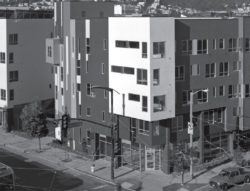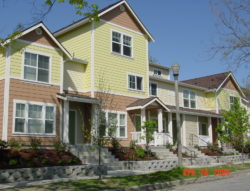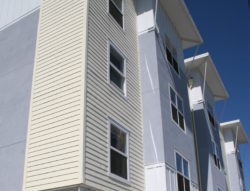Resource Center

COVID- 19 Resources
The National Housing Law Project has put together the following resources for attorneys, advocates, policymakers, and others for assistance during the COVID-19 national public health crisis. We will continue to update this with NHLP resources and other resources as they become available.

Low-Income Housing Tax Credits
The Low Income Housing Tax Credit (LIHTC) program was created in 1986 and is the largest source of new affordable housing in the United States. There are about 2,000,000 tax credit units today and this number continues to grow by an estimated 100,000 annually. The program is administered by the Internal Revenue Service (IRS).

Project-Based Rental Assistance
Project-based rental assistance provides critical affordable housing stock to low-income families across the country. This type of rental assistance allows tenants to live in an affordable unit and pay rent based upon their income. Project-based rental assistance, such as project-based Section 8 rental assistance, can be paired with units in HUD multifamily mortgage programs to provide a deeper level of affordability. With project-based rental assistance, a private for-profit or non-profit owner enters into a contract with HUD to provide affordable units.

Project-Based Vouchers
A variation on the Section 8 Housing Choice Voucher program is the Project-Based Voucher (or “Project-Based Certificate” for commitments prior to 2001) program. Under this program, the public housing authority (PHA) uses a portion of its Housing Choice Voucher funds to attach voucher assistance to particular units through Housing Assistance Payment (HAP) contracts with private landlords.

Public Housing
The United States Housing Act of 1937 (42 U.S.C.A. § 1437) established the public housing program, which produced nearly 1.4 million units nationwide. Largely because of dispositions, demolitions and the Rental Assistance Demonstration, there are currently approximately 1 million units remaining in the public housing program. The Department of Housing and Urban Development (HUD) (via its headquarters in Washington, D.C., 10 regional offices, and many local offices) administers operating funds and capital funds provided by Congress to approximately 3,300 public housing agencies (PHAs) to house eligible low-income tenants.

Section 8 Housing Choice Vouchers
The Section 8 Housing Choice Voucher (HCV) Program was enacted in 1974 as Section 8 of the United States Housing Act. On the federal level, the Department of Housing and Urban Development (HUD) administers the program and locally, vouchers are administered by public housing agencies (PHAs). Congress annually appropriates funds for vouchers. PHAs are given a set number of vouchers that they are authorized to use each year.

Section 202 and Section 811 Programs for the Elderly or Persons with Disabilities
The HUD Section 202 and Section 811 programs provide critical affordable housing to our nation’s elderly and persons who experience disabilities. The Section 202 and Section 811 programs became distinct programs in 1990; before that time, the Section 202 program served both populations. The Section 202 program funds development of affordable housing for elderly households. The Section 811 program provides non-profits with funding to provide supportive housing for disabled, very- and extremely-low-income persons.

USDA Rural Homeownership Programs
USDA operates its housing programs through the Rural Housing Service (RHS), an agency within the Rural Development (RD) division of the department. RHS staff, which is only located in Washington, D.C., establishes the rules and policies for operating the housing programs through regulations, handbooks and other notices. The day-to-day management of the programs is carried out by RD staff, which are located in all 50 states and U.S. territories.
